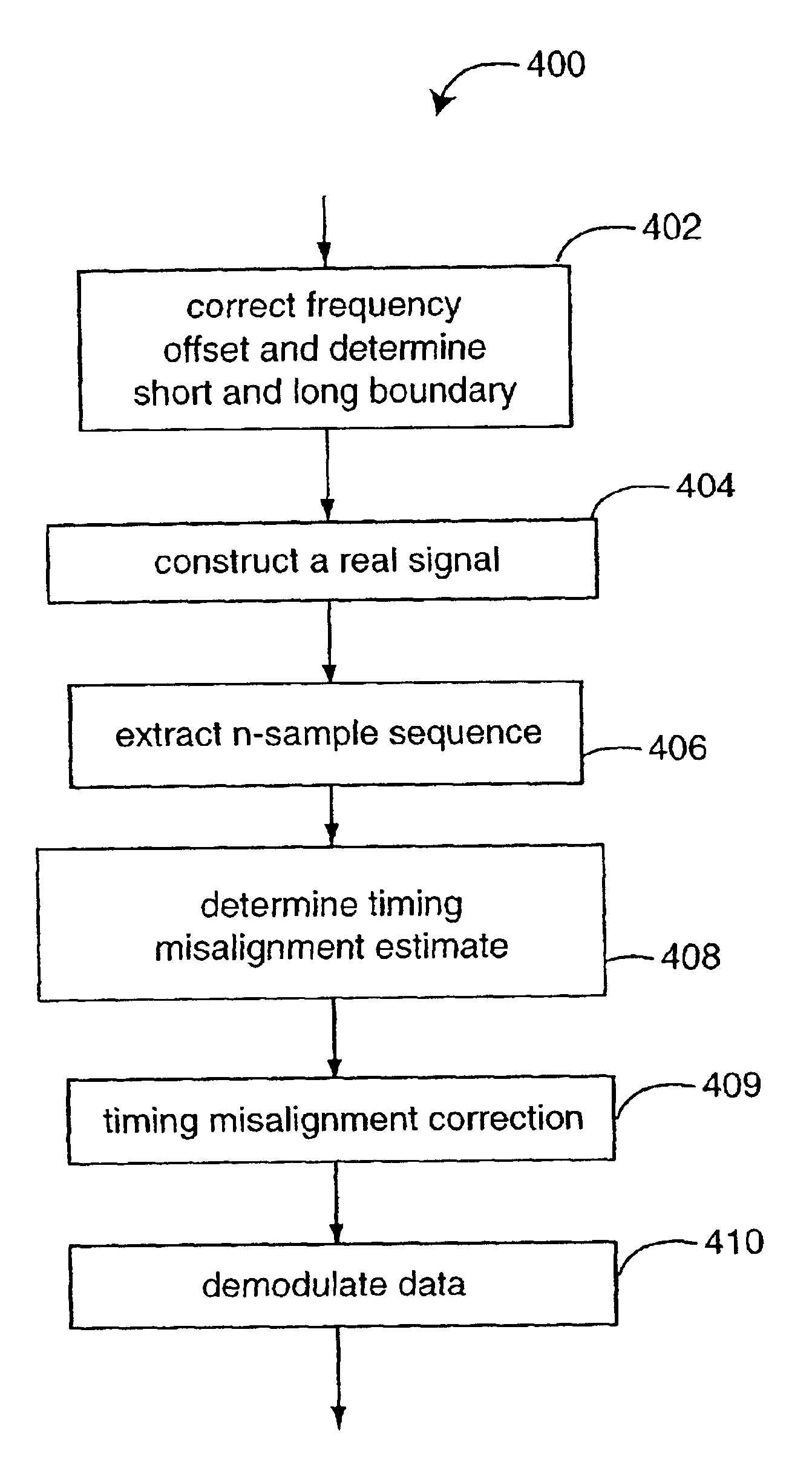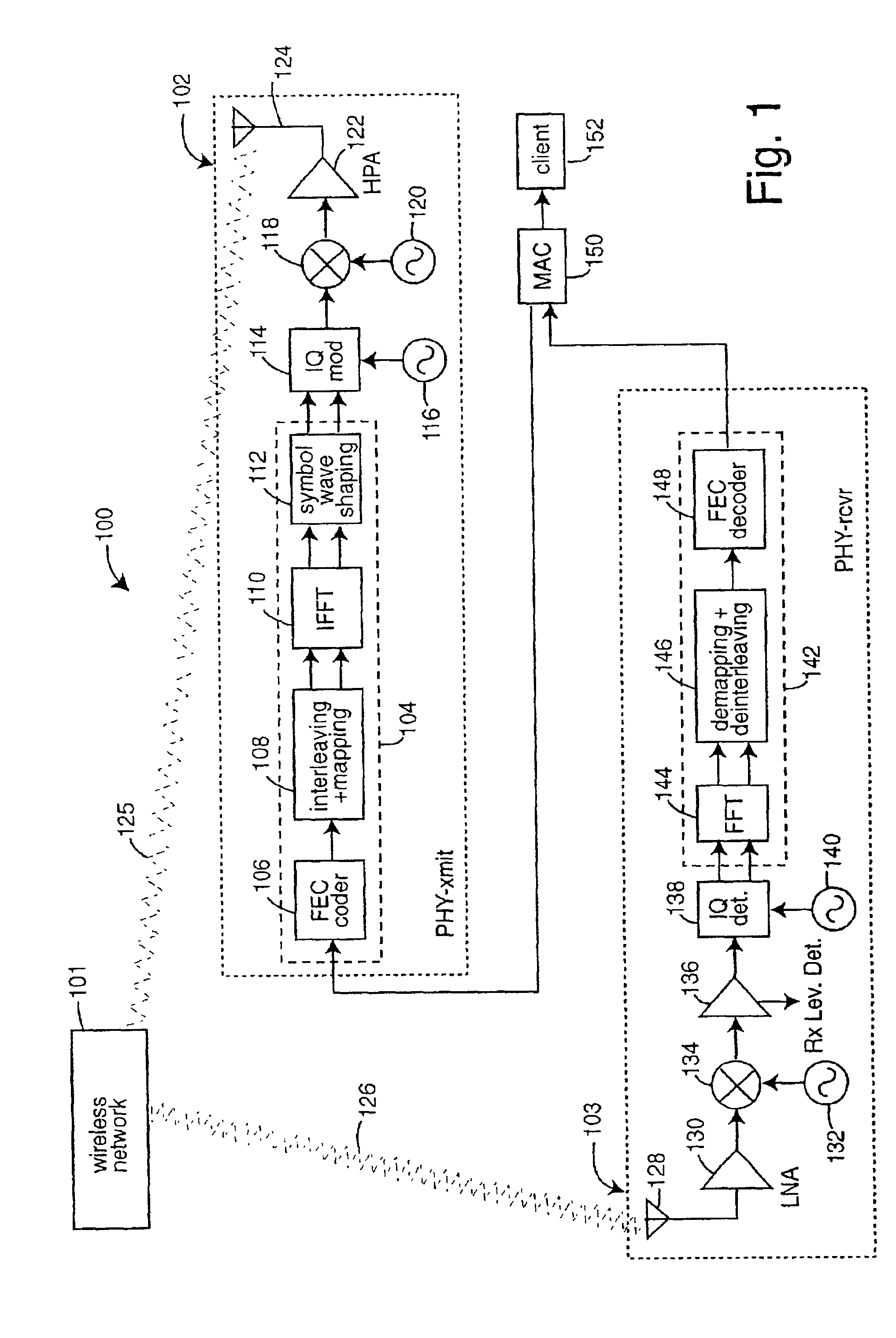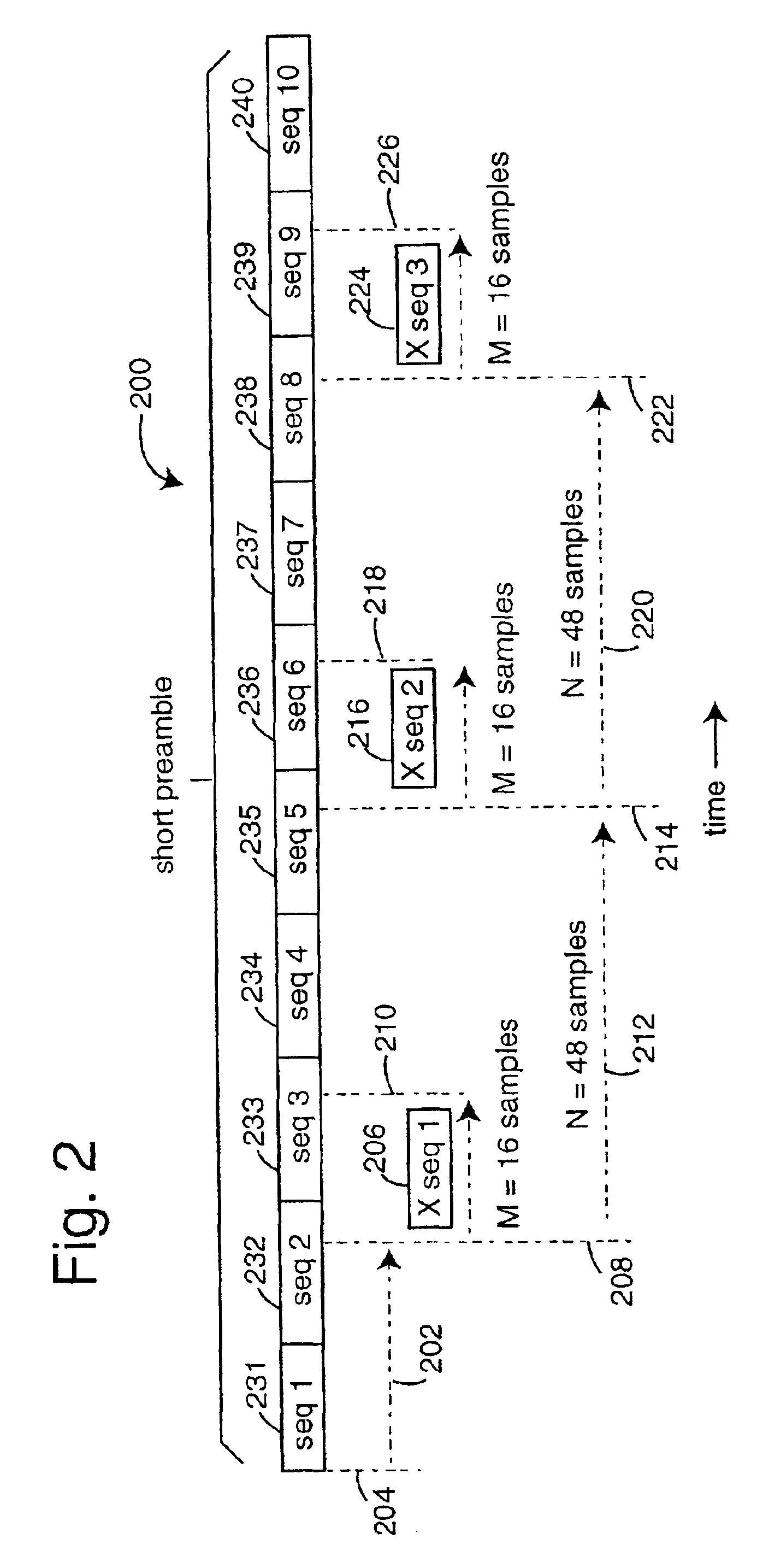Timing misalignment estimation
a technology of misalignment estimation and time, applied in the field of physical layer (phy) digital signal processing, can solve the problems of serious degradation of demodulation, hardware limitations of rf, and imbalance of iq and phase noise of receivers, and achieve the effect of reducing the number of errors
- Summary
- Abstract
- Description
- Claims
- Application Information
AI Technical Summary
Problems solved by technology
Method used
Image
Examples
first embodiment
[0020]the invention for timing misalignment detection and correction works with the short preamble. A real signal constructed from the complex time-domain signal associated with the short preamble is discrete Fourier transform processed to gather timing misalignment information. The short preamble is comprised of ten 0.8 μs duration, i.e. 16-sample long at sampling frequency=20 MHz, sequences. The short preamble is mainly used for packet detection and coarse frequency offset estimation. In the absence of any frequency offset or other distorting effect, the short preamble is characterized by its imaginary (quadrature-phase) part which corresponds to its real (in-phase) part in almost every particular. The principle difference is the imaginary (quadrature-phase) part is delayed 0.4 μs (eight sample times) with respect to the real (in-phase) part.
[0021]Such phenomenon can be taken advantage of to decrease signal waveform processing complexity by simply adding real (in-phase) and imagin...
embodiment 400
[0027]FIG. 4 represents an embodiment of the invention for timing misalignment determination in a radio receiver, and is referred to herein by the general reference numeral 400. The embodiment 400 comprises a step element 402 for correcting a frequency offset and determining a boundary between a short preamble and a long preamble in a received radio signal; exemplary embodiments of these functions are described in “Coarse Frequency Offset Estimation—Patent Disclosure”, Alain Chiodini, John Reagan, nBand Communications, 2000 and “OFDM Data Demodulator Timing Synchronization—Patent Disclosure”, John Reagan, Alain Chiodini, nBand Communications, 2000. A step element 404 constructs a real signal from a complex time-domain signal associated with the short preamble. A step element 406 extracts a n-sample (n is preferably a power of 2 or 4 so that RADIX-2 or RADIX-4 FFT may be used subsequently) sequence from a portion of the short preamble to obtain a plurality of equidistant equal amplit...
second embodiment
[0028]the invention for timing misalignment and correction works with the long preamble rather than the short preamble. It is assumed that the position of the boundary between short and long preambles has been accurately determined. The two 64-sample long sequences that constitute the long preamble are linearly combined using least squares techniques to obtain an improved signal. This method captures the essential characteristics of the received signal and minimizes the impact of residual frequency offset and other distortions on the quality of estimation. The absolute value of any timing misalignment is estimated by computing a normalized dot product of the resulting signal and the ideal on-baud sequence whose derivative is used to determine the sign through the calculation of a second dot product. The minimization of the cost function (in the least square sense) described hereafter leads to two complex coefficients (also called weighting coefficients) that are used to combine the ...
PUM
 Login to View More
Login to View More Abstract
Description
Claims
Application Information
 Login to View More
Login to View More - R&D
- Intellectual Property
- Life Sciences
- Materials
- Tech Scout
- Unparalleled Data Quality
- Higher Quality Content
- 60% Fewer Hallucinations
Browse by: Latest US Patents, China's latest patents, Technical Efficacy Thesaurus, Application Domain, Technology Topic, Popular Technical Reports.
© 2025 PatSnap. All rights reserved.Legal|Privacy policy|Modern Slavery Act Transparency Statement|Sitemap|About US| Contact US: help@patsnap.com



